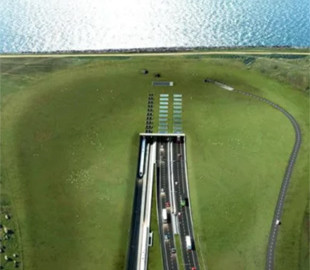The tunnel between Germany and Denmark will cost 7 billion euros. And will be completed by 2029.
The world's longest underwater tunnel, going down to a depth of 40 meters under the Baltic Sea, will connect Denmark and Germany, reducing travel time between the two countries when it opens in 2029 year This is reported by CNN.
The first section of the Fehmarnbelt Tunnel was opened on June 17 by King Frederik X of Denmark. This was a significant event four years after the start of construction in 2020, which was preceded by more than ten years of planning.
On the Danish side, east of Redbyhavn, a plant was completed last year where the 89 massive concrete sections that make up the tunnel will be built. Fermern A/S, the Danish state-owned company responsible for the project, says it is the largest and most modern production facility of its kind.
The 18-kilometer tunnel is one of the largest infrastructure projects in Europe, with a construction budget exceeding 7 billions of euros.
By comparison, the 50-kilometer Channel Tunnel connecting England and France, completed in 1993, cost £12 billion (US$13.6 billion) in today's money. Although longer than the Fehmarnbelt Tunnel, the Channel Tunnel was built using a boring machine rather than by submerging ready-made tunnel sections.
The new tunnel will be built across the Fehmarn Belt between the German island of Fehmarn and the Danish island of Lolland, and is designed as an alternative to the current ferry service from Redby and Puttgarden, which carries millions of passengers every year. If the ferry crossing now takes 45 minutes, it will take only seven minutes by train, and by car — 10 minutes.
What is known about the tunnel between Germany and Denmark
The tunnel, whose official name — Fehmarnbelt Fixed Link, will also be the longest combined road-rail tunnel in the world. It will consist of two two-lane highways, separated by a service road, and two electrified railway tracks.
Currently, the connection between the Scandinavian peninsula and Germany via Denmark can be made either by ferry across the Fehmarnbelt or by a longer route via bridges between the islands of Zeeland, Funen and the Jutland peninsula.
The project dates back to 2008, when Germany and Denmark signed an agreement on the construction of the tunnel. It then took more than ten years for both countries to pass the necessary legislation and carry out geotechnical and environmental studies.
While the process went smoothly on the Danish side, in Germany a number of organizations including ferry companies, environmental groups and local municipalities, appealed against the project's approval over allegations of unfair competition or environmental and noise concerns.
The tunnel sections will be placed directly under the seabed, about 40 meters below sea level at the deepest point, and moved into place with the help of barges and cranes. Placement of sections will take approximately three years. Up to 2,500 people will work directly on the construction project.

